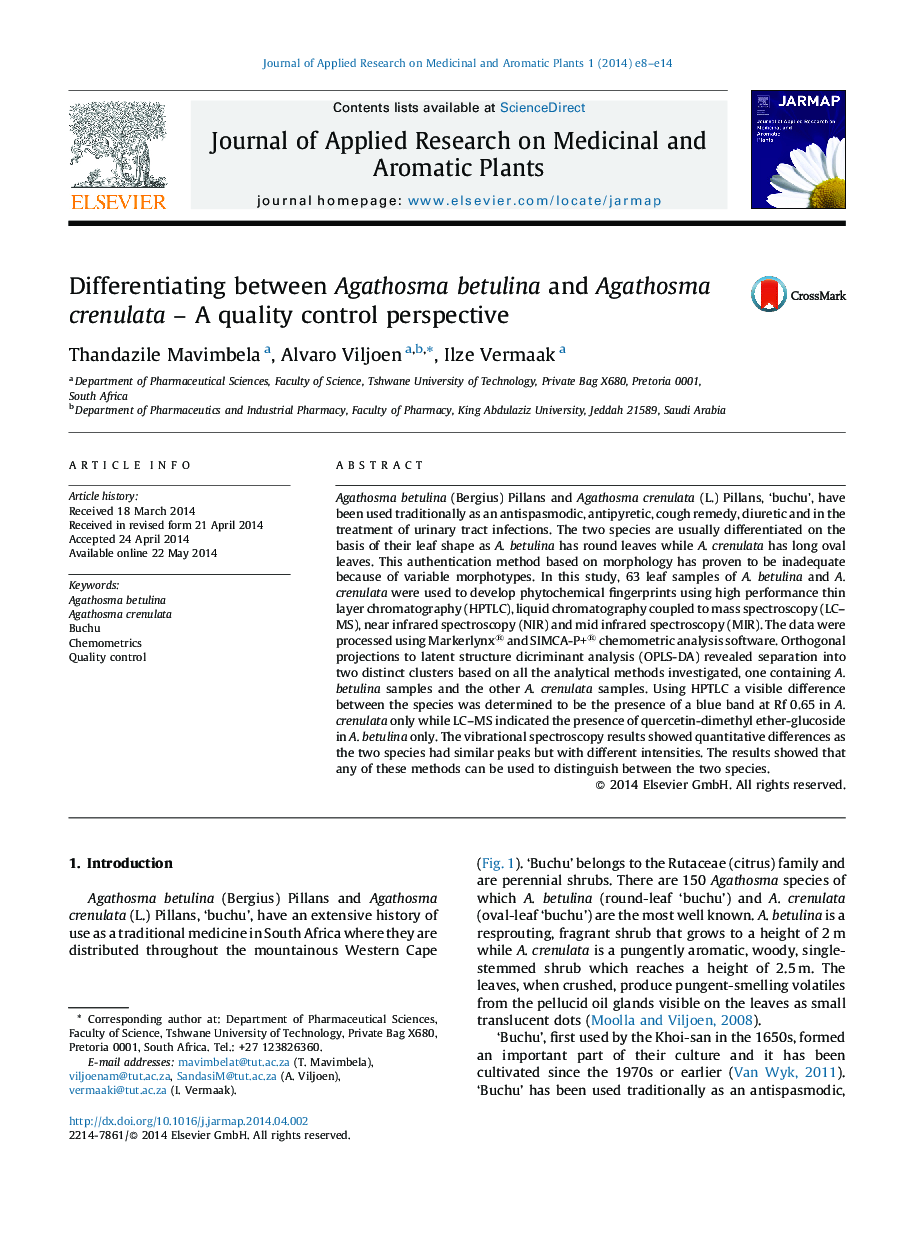| Article ID | Journal | Published Year | Pages | File Type |
|---|---|---|---|---|
| 3099211 | Journal of Applied Research on Medicinal and Aromatic Plants | 2014 | 7 Pages |
•Agathosma species may be misidentified due to intermediate morphotypes.•Phytochemical fingerprints were developed using HPTLC, LC–MS, NIR and MIR.•HPTLC showed a distinguishing band at Rf 0.65 only present in A. crenulata.•LC–MS confirmed a dinstiguishing compound present in A. betulina.•Chemometric analysis separated the species into two distinct clusters in all cases.
Agathosma betulina (Bergius) Pillans and Agathosma crenulata (L.) Pillans, ‘buchu’, have been used traditionally as an antispasmodic, antipyretic, cough remedy, diuretic and in the treatment of urinary tract infections. The two species are usually differentiated on the basis of their leaf shape as A. betulina has round leaves while A. crenulata has long oval leaves. This authentication method based on morphology has proven to be inadequate because of variable morphotypes. In this study, 63 leaf samples of A. betulina and A. crenulata were used to develop phytochemical fingerprints using high performance thin layer chromatography (HPTLC), liquid chromatography coupled to mass spectroscopy (LC–MS), near infrared spectroscopy (NIR) and mid infrared spectroscopy (MIR). The data were processed using Markerlynx® and SIMCA-P+® chemometric analysis software. Orthogonal projections to latent structure dicriminant analysis (OPLS-DA) revealed separation into two distinct clusters based on all the analytical methods investigated, one containing A. betulina samples and the other A. crenulata samples. Using HPTLC a visible difference between the species was determined to be the presence of a blue band at Rf 0.65 in A. crenulata only while LC–MS indicated the presence of quercetin-dimethyl ether-glucoside in A. betulina only. The vibrational spectroscopy results showed quantitative differences as the two species had similar peaks but with different intensities. The results showed that any of these methods can be used to distinguish between the two species.
Graphical abstractFigure optionsDownload full-size imageDownload as PowerPoint slide
